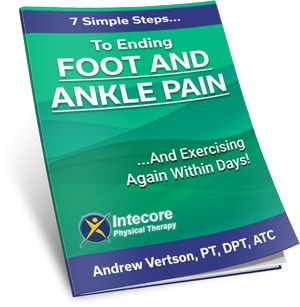How long does physical therapy take?
I guess there are unscrupulous physical therapists out there that would answer this question with, “Well, how long is a piece of string?”. They’re the type that tries to get you to commit to more sessions than necessary to make as much money as possible.
They’re purposefully vague.
Leave you frustrated in the waiting room.
Get you to complete reams and reams of pointless paperwork.
Don’t fix your issue.
And generally, waste your time (and your money).
Get ‘outta there.
The question of how long Physical Therapy takes is an important one. It’s information that should be made clear from the start.
Is it five sessions over two weeks, 20 sessions over three months?
Something different altogether?
How long are the sessions, 30 minutes, 45 minutes, 1 hour?
Do Physical Therapists work late? Can I get an appointment after work?
They’re important questions.
We all lead busy lives. Right?
Most professional Physical Therapy clinics are entirely transparent about what type of therapy you need, how long it’s going to take, and how much it will cost. At your first face-to-face consultation or telehealth consultation, we provide this information to remove the guesswork and get rid of any worries you may have about it. Right from the outset, so you can concentrate on healing.
You can then plan time off work. Have someone watch your kids (even though they’re welcome at our family-friendly clinic). Or make any other arrangements you need to around pre-determined sessions.
If you are worried about why your body hurts. Want to get back to competitive sports or find a natural solution to chronic pain instead of the painkillers prescribed by your family physician: Physical Therapy can help.
If you suffer from chronic pain, stiff joints, or problems with mobility, Physical Therapy can transform your life. Experienced Physical Therapists like us quickly evaluate what’s going on for you and work with you to rehabilitate and get you back to full fitness. But it can be a significant expense out of your family budget, especially if your insurers deem that the treatment is not medically necessary or outside the terms of your policy.
So, it’s essential to get an accurate estimate on how many sessions you’re going to need and how much time you may or may not need to take off work.
It’s not an exact science. The human body is complex. Things may change slightly – you may need more sessions or less. But PT’s estimate treatment times based on many years of experience, so we’re usually not that far wrong – and update you throughout the process.
It largely depends on the issue we’re treating, but here’s what to expect at your first Physical Therapy appointment:
If you come to us via your Physician and you’ve never visited a PT before, it may feel daunting – not knowing what to expect. But you have nothing to worry about here. We’re a very friendly, family clinic – we like to make all our patients feel at home. During your first session, you’ll get to know your PT, and they’ll get to know you.
They’ll talk to you about your goals, restrictions, physical aspirations, injuries, pain points, and current limitations. We work hard to build a healthy partnership, with all patients, from the start – supporting and cheering you on throughout your healing journey.
At your first Physical Therapy session, we take a complete medical history. Even things that may not feel immediately relevant and spend some time chatting to you about what to hope to get out of Physical Therapy. It’s good to have a goal in mind. Then, we move on to a physical exam. We assess your balance, strength, neurological function, range of motion – in relevant joints, and mobility.
Your PT will then use this information to create your Individualized Rehabilitation Program (treatment plan).
How Long Does A Typical Physical Therapy Session Take?
Specifically, the answer to this question depends on the injury or mobility problem that we’re treating – and the types of therapies we, therefore, recommend in your Individualized Rehabilitation Program. Post-operative rehab usually takes a little longer than a sprained ankle, for instance.
Most sessions at the clinic last between 30 minutes and 90 minutes, though.
Timings are dependent on the combination of therapies we decide will get you the best possible results. These include but are not limited to:
Therapeutic Exercise
Your Physical Therapist will create and teach you a set of exercises tailored to your specific problems and your rehabilitation. Some of these will you’ll do during your sessions under supervision. You will also get additional exercises to do at home to mobilize your joints and connective tissue and maximize your recovery.
Manual Therapy & Massage
To aid recovery, your Physical Therapist may manipulate and massage specific areas of your body. This hands-on therapy helps decrease pain levels, improves circulation to your tissues, reduces muscle tension, and helps speed up the healing process.
Heat Therapy
Like massage, heat therapy improves blood flow, reduces pain, and decreases inflammation. Heat is applied to relax muscles or a particular type of cold therapy to decrease inflammation in certain circumstances – dependent on your specific situation. Either of these therapies could be included in your Individualized Rehabilitation Program and your treatment sessions. Hydrotherapy, a specialized type of heat therapy with the added benefit of being submerged in water, may also be used.
Spinal Traction
This one might sound weird, but we might hang you upside down for a little while. Spinal traction relieves pressure on your back and neck and allows the discs and tiny bones to get some breathing space. We call it “decompression therapy.” It’s like taking your spine on a relaxing mini-break. It doesn’t sound good, but it’s safe and deeply relaxing. Our patients tell us that they feel revived, like they’ve been on a mini-break after a session. It helps conditions like Sciatica and degenerated disc problems and can relieve irritated nerves too.
e-Stim
As it’s more commonly called, electrical stimulation is a highly effective form of therapy. It uses a super-safe form of electrical current to contract poorly functioning muscles. This type of therapy can also help with pain relief.
Here are our top tips for your first Physical Therapy session:

Wear Something Comfortable
You don’t need to put too much thought into what to wear for physical therapy. Just something casual that you can move around in easily will suffice. Wear comfortable shoes that support your ankles too. But bear in mind the injury or pain problem that you’re attending for. Is it easily accessible by your Physical Therapist? Think loose trousers that roll up without restriction or shorts for knees, ankles, and legs. For shoulder or arm issues, a vest, baggy t-shirt, or sports bra will make things easier for you and your PT – so you can make the best use of your allotted time.
Get Ready To Share
It’s worth spending some time before your appointment making some notes about the issues you’re attending the clinic for:
– When did it start?
– What triggers it?
– What, if anything, helps the pain?
– What are you hoping to achieve with Physical Therapy?
This process will save you and your therapist lots of time in taking your medical history and allow them to move on to a physical evaluation. After that, they can move quickly to focus on treating the problem in question. Arriving with notes also prevents you from forgetting relevant information that might influence the diagnosis or your Individualized Rehabilitation Program (treatment plan).
Prevent Injury & Protect Your Possessions
One of the most important things you can do to prepare for a Physical Therapy session is to remove all your jewelry before the appointment. Your Physical Therapist will ask you to do this. So if you wear a lot of jewelry, you might be wasting 5-10 minutes of your allotted time if you remove it during your session. Physical Therapy is often a hands-on treatment. Earrings, necklaces, and bracelets can get caught up and damaged, or worse still, cause injury. So, it’s wise to take them off first and stay safe.
Frequently Asked Questions About Physical Therapy
How do I book an appointment?
It’s easy to book a Physical Therapy appointment. We even offer two types of free consultations – so you find out whether we’re a good fit for you. Apply here for a 30-minute telephone consultation or a Discovery Visit taster session. It’s completely free, and there is no obligation to book further treatment after the consultation.
How much does Physical Therapy Cost?
Costs for Physical Therapy vary based on various factors, depending on the type of injury you have and what kind of therapy you require. Click here to inquire about costs and availability at Intecrore Physical Therapy.
Still, have more questions about Physical Therapy? Download our free report on “The 51 Most Frequently Asked Questions on Physical Therapy”.
You can find more ways to get in touch with us through our contact page. We look forward to hearing from you, and helping you get back on your feet for a better quality of life!
- Are You Experiencing Shoulder Pain from Sleeping Wrong? - October 21, 2025
- How Many Hours of Sleep Do You Need for Recovery and Injury Prevention? - September 8, 2025
- Can Physical Therapy Help You Avoid Surgery? - August 1, 2025
















